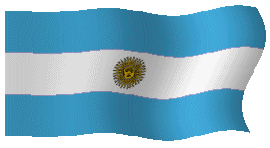
B"H
Jewish  Tours
Tours
 Buenos Aires, Argentina
Buenos Aires, Argentina

This extract comes from "In Pursuit: The Men and Women Who Hunted the Nazis" by
Andrew Nagorski, published by Simon & Schuster Australia, $35, and available in
stores now. Supplied
The two men were also thrown off by the slovenly-looking European woman they
spotted in the yard of the house. Eichmann was known as a womaniser, and they
couldn't believe she could be his wife.
To the source
Harel insisted on getting the name of Bauer's source so Mossad could check
further. His name was Lothar Hermann, his address was in Coronel Suarez, a city
more than 300 miles from Buenos Aires, and he turned out to be blind. His
parents had died at the hands of the Nazis, he said, and he had spent time in
the concentration camps. But, he added, "I have Jewish blood in my veins, but my
wife is German and our daughter has been brought up according to her mother's
traditions."
The Hermanns had lived in the Olivos suburb of Buenos Aires, until 18 months
earlier, where they were "accepted as German in every way". Sylvia, the
daughter, had begun dating a young man named Nicolas Eichmann, who had no idea
she was partly Jewish. He visited their house on several occasions, and once he
remarked that it would have been better if the Germans had completed the
extermination of the Jews. He also explained that he did not have a distinct
regional accent because his father had served in many different places during
the war.
Mossad agent Peter Malkin wore these gloves to avoid touching Eichmann with his
bare hands when he dragged him into a waiting car during his capture.
In those days, many Nazis felt so much at home in Argentina that they took only
minimal precautions – and, while Adolf had been living under an assumed last
name, his sons never bothered to change theirs. But Nicolas did take one
precaution when he started seeing Sylvia: he made a point of never revealing his
home address. When Nicolas and Sylvia wrote to each other after she moved, he
instructed her to mail her letters to a friend's address.
Hermann took his daughter to Buenos Aires to investigate further. With the help
of a friend, she had located Nicolas' house and simply knocked on the door. When
a woman opened the door, Sylvia asked if this was the home of the Eichmann
family.
"Her reply did not come immediately, and during the pause a middle-aged man
wearing glasses came and stood beside her," she recalled. "I asked him if Nick
was at home." Speaking in an "unpleasant and strident" voice, he told her that
Nick was working overtime. Sylvia continued: "I asked if he was Mr Eichmann. No
reply. So I asked if he was Nick's father. He said he was, but only after long
hesitation."
Lothar and Sylvia Hermann learnt from a property registry that the owner of the
house in Chacabuco Street was an Austrian named Francisco Schmidt, and that it
had two apartments with separate electric meters, one for someone named Dagoto
and the other for someone named Klement. Hermann concluded that Schmidt must be
Eichmann, and that he had undergone plastic surgery to change his appearance.
But Bauer learnt from a new source, he told the Israelis, that Eichmann had
travelled to Argentina under the name of Ricardo Klement. Harel assigned a new
man, Zvi Aharoni, to follow up. He also informed Ben-Gurion of the possible
breakthrough. Ben-Gurion replied that, if the lead panned out, he wanted
Eichmann brought back for trial in Israel. He believed such a trial "would be an
achievement of tremendous moral and historical consequence".
Harel considered Aharoni to be "one of the best investigators" in Israel; born
in Germany, he had served in the British Army, interrogating German POWs. On
March 1, 1960, Aharoni finally landed in Buenos Aires, armed with an Israeli
diplomatic passport under a false name.
Accompanied by a local student who had agreed to help out, Aharoni drove in a
rented car to Chacabuco Street in Olivos on March 1, but when the student walked
up to the house, pretending to be looking for someone else, it turned out that
there were no tenants in the two apartments and painters were at work. The
family – "the Germans" – had moved just 15 to 20 days earlier.
The game plan
|
Visite nuestro sitio/Visit our home page: |